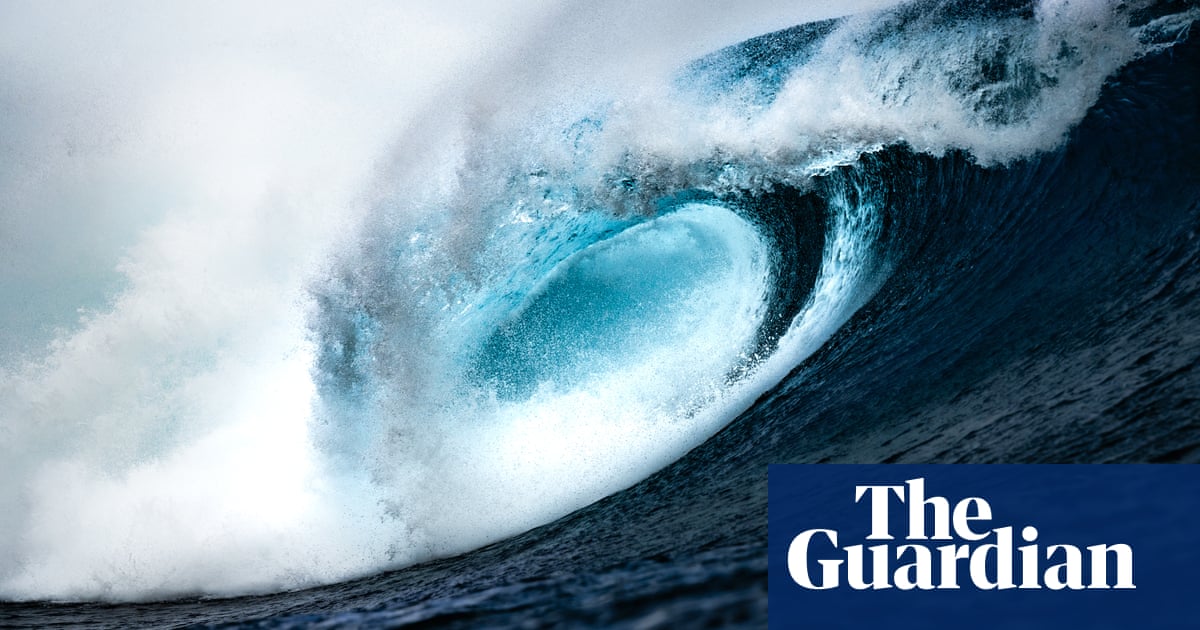Peva Levy, often called the “godfather” of Teahupo’o, has witnessed his home town change from remote fishing village to surfing mecca in a matter of decades. Levy was a child of the ocean. He grew up swimming and fishing and was one of the first to bodysurf the “secret” wave beyond the reef, a dangerously thrilling, near-perfect barrel known only to local people. Levy couldn’t have known that the wave would one day attract the world’s leading surfers and, eventually, the Olympic Games.
“When someone says ‘Teahupo’o’ these days, the first thing that everyone thinks of is the wave, because it has become such a mythical spot,” says Levy, in his handbuilt house overlooking the lagoon.
Just outside his front gate things have recently changed. Roadworks block parts of the main road, as workmen fill in holes and smooth the asphalt before 27 July, when Teahupo’o, in Tahiti, French Polynesia, will be showcased to the world as host of the 2024 Paris Olympic surfing event.
“It was so quiet and good here,” says Levy, who is also a marine biologist and member of environmental association Vai Ara O Teahupo’o. “Now, everything has changed.”
Despite the building sites and increasing numbers of tourists, Teahupo’o retains its charm. People smile and greet one another. There are no hotels – instead, visitors stay in family-run guesthouses or at local homestays. Life is centred around the ocean. The black sand beach at the end of the village road is typically full of children riding the small waves. Spearfishers emerge from the lagoon in the mornings and late afternoons with their catch.
Heimiri Afo, a 38-year-old firefighter and mother of five, sums up life in the village. “We live simply, and the ocean is everything to us,” she says, watching her family play on the beach. “The food we eat every day comes from the sea.”
She motions out to the reef: “We grew up here on that wave and we have always respected it.”
Like many people, Afo is pleased with some of the new infrastructure that’s being built but is worried about whether the benefits of hosting the Games outweigh the drawbacks.
Léon Estall, 33, a professional fisher, cannot see the economic benefits for the village. “It’s not the local population here who are making much money from this,” he says, while working his side job selling coconuts to tourists on the roadside. “Unfortunately, the money is going elsewhere. We’re a bit heartbroken about that.”
Although villagers may not see a huge change in income due to the Games, many rely on the money they make renting out their properties to tourists and surfers to provide for their families. Since the Olympics was announced, there has been a rise in the number of new houses being built, and the number of places available to rent to visitors.
Rairoa Parker manages the Havae Lodge in Teahupo’o, which he opened last October. He loves meeting people from around the world through the lodge, a local style family house on the beachfront.
He says business has been going well, and while he’s not against the Games, he doesn’t agree with the way some of the infrastructure projects have been handled and worries about the long-term consequences.
One example is the Olympic control centre, a backstage area that will handle logistics during the Games. The area, which is now government-owned, covers almost two hectares of land, which has been cleared, filled with rocks and covered with large temporary tents.
“There used to be a taro and sweet potato field there, which provided food for all the schools in this district,” says Parker. “But the government prefers to stop the taro and stick an Olympic village in there.”
What Parker and other people would like to know is what will happen to areas like this once the Games are over, as the land will not be able to be used to grow crops. Some are hoping for a skate park or children’s playground, but the local government has not made any announcements.
The most controversial project, the 500m Pacific franc (£3.5m) judges’ tower, now stands in the lagoon. Opposition to the tower was strong internationally and in Teahupo’o itself, due to the short- and long-term environmental impacts of construction – and opinion is still divided.
Tahitian surfing star Michel Bourez competed in his sport at the 2020 Olympics and, despite some of his friends in Teahupo’o campaigning against the tower, is sanguine about the latest addition to the island.
“As we say in French, you can’t make an omelette without breaking the eggs. At the end of the day, I feel like the government did the right thing to go ahead with the tower,” he says.
On the beach opposite the tower, sitting with her friends, 17-year-old Anaihe says she recognises that it is a privilege to host the Olympics but she is also worried about the longer-term impact. “There’ll be a lot of people coming into this little village and I think after they leave, they’ll leave traces. It’ll change us. We’ll never be like before and for me, that’s a shame.”
It’s a concern echoed by Levy. “Teahupo’o has strong mana (natural energy). When you come here, you feel it. If you come, you need to respect it, respect the people, and respect nature. Respect – that’s all we ask.”
